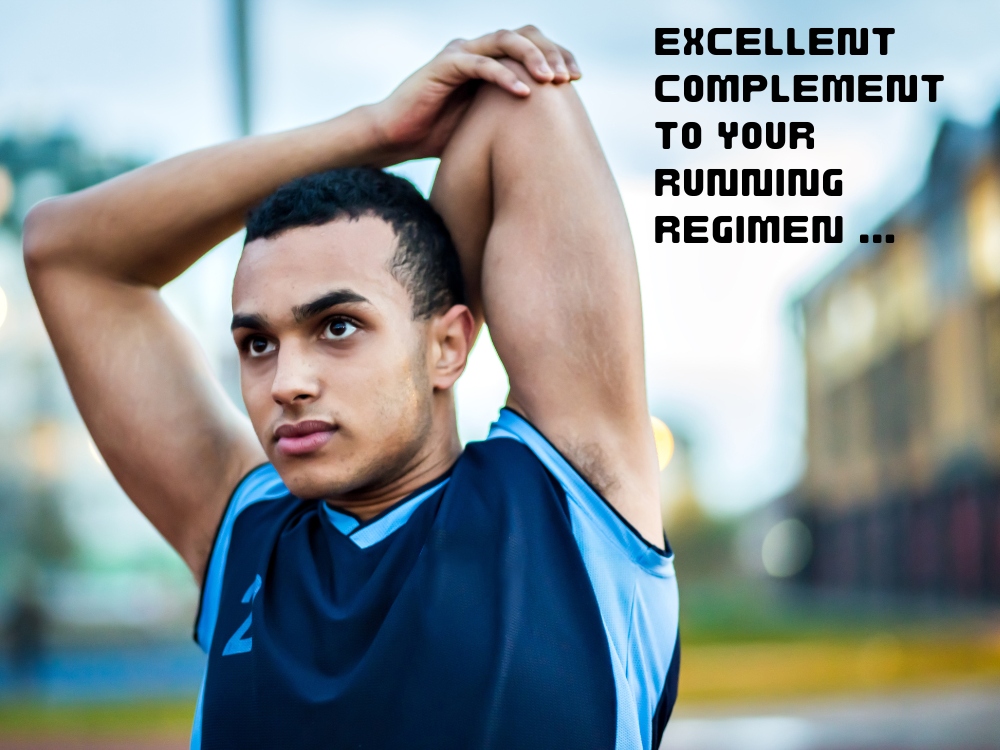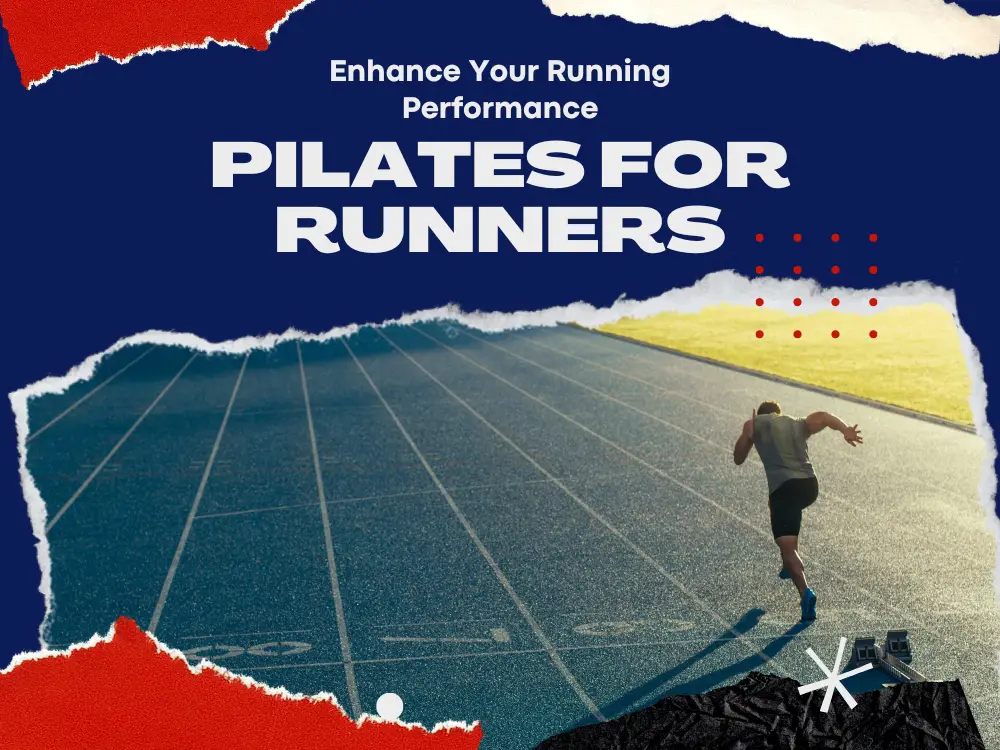You lace up your running shoes, step out the door, and hit the pavement.
You feel the rhythm of your stride, the pumping of your heart, and that familiar rush of endorphins. But are you reaching your full potential as a runner? Could there be a missing piece in your training routine that propels you to new heights?
Have you ever considered Pilates as part of your workout regimen? Yes, those mat exercises often associated with dancers could be just what you need to enhance your running performance.
This article will delve into how Pilates can benefit runners like yourself – from injury prevention to improved strength and flexibility. We’ll discuss how often runners should practice Pilates, which specific exercises are best for runners, ways to incorporate it into your training schedule and even tips on finding an ideal Pilates instructor.
Let’s take this journey together to discover how Pilates could make you a stronger and more efficient runner.
Is Pilates Good Workout for Runners?
Absolutely! Pilates isn’t just a fab workout for toning your core, it’s also a runner’s secret weapon for boosting performance and reducing injury risk. It’s all about stability, flexibility, and strength – three crucial factors that directly impact how well you run.
By incorporating Pilates into your routine, you’re not only enhancing your running form but also ensuring that each stride is more efficient and powerful.
What makes Pilates even more beneficial for runners is its focus on the powerhouse or the body’s core. This includes muscles in your lower back, abdomen, hip flexors, glutes – basically everything that plays a significant role in maintaining good posture during runs. When these muscle groups are strong and flexible, they work together to create a solid foundation for movement. This means less strain on your joints during those long-distance runs and better endurance as well.
So yes, without a doubt, Pilates can be an excellent complement to your running regimen. Not only does it offer invaluable benefits to improve your performance but it also ensures you’re protecting yourself from potential injuries along the way – which is equally important if not more so!
Now let’s delve deeper into what exactly these benefits of Pilates are for runners like yourself…

What are the Benefits of Pilates for Runners?
Incorporating this low-impact exercise into your routine can significantly improve stride, speed, and stamina, making it a fantastic tool for those who love to hit the track.
The benefits of pilates for runners don’t stop at physical improvements. You’ll also notice a boost in mental strength. The mindful nature of pilates helps develop better focus and concentration skills that prove beneficial during long runs when mental fatigue often kicks in.
Through controlled breathing techniques taught in Pilates classes, you can learn how to control your breath efficiently during intense running sessions – preventing quick exhaustion.
What’s more? As you continue with Pilates training alongside your regular running schedule, you should find yourself less prone to common running injuries due to improved muscle strength and flexibility. In essence, it equips your body with better resistance against wear-and-tear from strenuous activities such as long-distance running or sprinting intervals.
Can Pilates Help Prevent Running Injuries?
Imagine lacing up your shoes, hitting the pavement, and feeling your body move with a fluidity and strength you’ve never experienced before – all while reducing your risk of injury. Sounds like a runner’s dream, right?
Well, Pilates can make this dream a reality. With its focus on core strength, stability, flexibility, and balance – key factors in maintaining good form and preventing injuries – Pilates provides an ideal cross-training method for runners.
Pilates has been shown to improve muscle symmetry and alignment, which are vital for efficient running mechanics. It helps correct imbalances that often lead to injuries by strengthening weaker muscles while lengthening tight ones. This balance of strength and flexibility means less wear-and-tear on your joints and reduced strain on your tendons and ligaments.
Moreover, the emphasis on controlled movement in Pilates trains you to be more mindful of how you move — making it easier to avoid harmful patterns that could potentially lead to injury.
Through regular Pilates sessions, not only will you notice improvements in strength and posture but also a significant reduction in common running-related injuries such as shin splints or runner’s knee.
Now that we’ve got the potential risks covered – let’s talk about frequency; how often should you be incorporating this beneficial practice into your running routine?

How Often Should Runners do Pilates?
Striking the right balance with your workout schedule can be tricky, but it’s crucial for achieving optimal performance and avoiding overtraining.
As a runner, Pilates should definitely be part of your training regimen, but how often should you practice it?
The answer largely depends on your running routine and overall fitness goals. If you’re just starting out or adjusting to a new workout schedule, incorporating Pilates once or twice a week is a good starting point. Remember, the goal isn’t to exhaust yourself; rather, it’s about enhancing your flexibility, strength, and endurance.
Gradually increasing the frequency of your Pilates sessions can prove beneficial as well. Once you’ve grown accustomed to one or two sessions per week, consider adding another session if time permits.
Doing Pilates three times a week allows you to work on different aspects of physical fitness like core strengthening and flexibility more frequently without risking burnout or injury. It’s important to listen to your body during this process – if you start feeling overly fatigued or notice decreased performance in your runs, scale back.
What are the Best and Specific Pilates Exercises for Runners?
Ever wondered which specific exercises can take your athletic prowess to the next level?
Well, when it comes to pilates for runners, there are a few key moves that can really make a difference:
- The first one is ‘The Hundred’. This exercise focuses on core strength and stability, both of which are critical for maintaining good form during long runs. It involves lying on your back with your legs in the air at a 45-degree angle while pumping your arms up and down.
- Another highly beneficial move is ‘The Saw’. This exercise works the obliques and helps improve flexibility in the spine — something runners often neglect but indeed need for efficient running mechanics. To do this, you’ll sit tall with your legs spread wide and rotate your torso from side to side, reaching towards each foot alternately as if you were sawing wood.
- Lastly, let’s not forget about ‘Leg Circles’. A fabulous way to strengthen the hip flexors, glutes and quadriceps – muscles heavily used while running. You’ll lie flat on your back, one leg extended along the ground while raising other straight into air then drawing large circles with it. You might be surprised how challenging these can be!
After mastering these exercises, you may find yourself stronger than ever before during those tough uphill sprints or lengthy endurance runs. Now that we’ve covered some of the best Pilates exercises for runners let’s go into how you could weave them into your running training regimen seamlessly without using steps as a guide.

How to Incorporate Pilates into Running Training?
Understanding the best Pilates exercises for runners is only half the battle. The real challenge lies in integrating these routines into your existing training schedule.
But don’t worry, it’s easier than you might think and can lead to significant improvements in your running performance.
Start by adding Pilates sessions to your routine twice a week, preferably on non-running or easy run days to avoid overworking your muscles. Begin with basic moves that focus on core strength and stability before progressing to more advanced exercises. Remember, consistency is key when it comes to Pilates – so commit yourself to regular sessions and be patient, as results may take time but are sure worth it!
Including Pilates in your running training doesn’t have to be complex or time-consuming. You could even perform some of the simpler exercises as part of your warm-up or cool-down routine during runs. This way, you’re making the most out of both workouts without adding much extra time!
Now that you understand how beneficial pilates can be for your running routine and how seamlessly it can integrate into your training schedule, let’s move onto finding an experienced instructor who understands runners’ specific needs and goals.
How to Find the Ideal Pilates Instructor for Runners?
Finding the right fitness coach who gets your specific needs as an athlete can be tricky, but it’s definitely worth the effort.
For runners, a Pilates instructor with experience in sports training could bring valuable insights. They need to understand how running impacts your body and which pilates exercises will be most beneficial for enhancing your performance and preventing injuries. So don’t rush this process; take the time to find someone who truly understands your goals and needs.
When searching for a suitable instructor, consider their qualifications and experiences. Look for certifications from reputable Pilates organizations like Polestar Pilates or Balanced Body, which indicate they’ve undergone rigorous training themselves.
Also, an instructor who has worked with athletes or specializes in sports conditioning would be ideal as they’d have a deeper understanding of what you require as a runner. Don’t hesitate to ask potential instructors about their backgrounds – it’s important you feel comfortable with their level of expertise.
It’s also crucial that the instructor is able to communicate effectively and inspire motivation within you. Remember that good rapport goes a long way in ensuring consistent progress!
Be sure to observe how they interact with other students too – do they provide clear instructions? Are they attentive and encouraging? These are all vital aspects that contribute towards a positive learning environment which helps you get the most out of each session.

FAQs about Pilates for Runners …
Curious about how mat (or any other) Pilates work can gear you up for your next marathon or simply enhance your daily jog? Let’s gently untangle some common misconceptions and answer those burning questions you’ve harbored about this powerful practice.
Frequently Asked Questions
Are there any specific diet or nutrition recommendations when combining Pilates and running?
Just like fueling a race car, your body needs proper nutrition for pilates and running. A balanced diet rich in protein, complex carbs, and healthy fats enhances both your recovery and performance. Remember to hydrate well!
Can Pilates exercises be modified for runners with physical limitations or disabilities?
Absolutely! Pilates exercises can be adapted to accommodate your physical limitations or disabilities. Your instructor should work with you to modify movements, ensuring you’re gaining benefits without risking injury.
Can Pilates help improve the mental aspect of running, such as focus and determination?
Perfectly! Pilates promotes patience, poise, and peace of mind. It enhances your endurance and encourages focus on form. This determination-driven discipline can definitely help in dialing down distractions during runs, boosting mental strength significantly.
Is there any scientific research or studies that support the benefits of Pilates for runners?
Yes, several studies support the benefits of Pilates for runners. For instance, some of them found Pilates improved core strength and balance, crucial for running performance.
Conclusion
So, you thought Pilates was just for ballet dancers and Hollywood stars? Quite the contrary, my friend! It turns out, it’s your secret weapon in boosting your running prowess.
Who knew that lying on a mat doing slow controlled movements could actually make you run faster and longer? So don’t just pound the pavement. Hit the Pilates studio too to discover new strides in your running journey.

